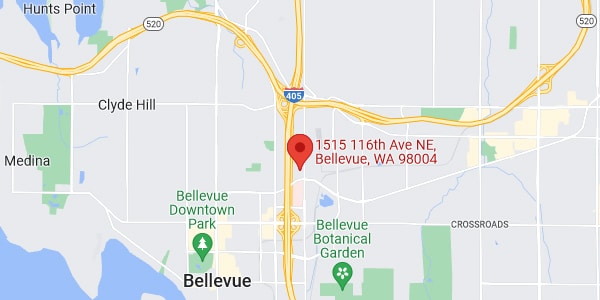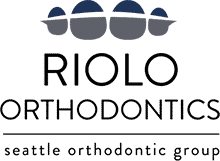What is the difference between Clear Aligners and Invisalign?
Invisalign is particular clear aligner system like “Kleenex” is a particular type of facial tissue or “Band Aid” is a particular type of stick on bandage. Everyone has heard of Invisalign because it’s parent company, Align Technology has marketed Invisalign directly to the public. Align Technology has spent hundreds of millions of dollars to make “Invisalign” one of the most recognized brands in the world. In many ways, Invisalign is the “McDonalds” of Clear Aligners systems, Invisalign makes it easy.
The Invisalign lab creates the setup and stages the tooth movements the dentist or orthodontist can make changes or they can just approve the planning work and Invisalign will manufacture, package and ship the product within days.
There are hundreds of different Clear Aligner systems in North America alone. Many of these lesser known systems allow the orthodontist to do the planning and fabrication of the Clear Aligners, thus allowing a level of customization above and beyond that available with a system like Invisalign.
Do Clear Aligners like Invisalign work as well as traditional braces?
The short answer is “it depends”. It depends on many factors; including but not limited to, the type of tooth movements required, how many hours per days the aligner trays are worn and the digital design of the aligners called the “staging”. Clear Aligner systems like traditional or lingual braces, have both strengths and weaknesses. The real challenge is to use each of these systems to their strength to deliver orthodontic care efficiently and when desired esthetically.
There are many examples showing Invisalign correcting all kinds of complicated malocclusions (crooked teeth). The real question to ask is: How predictably can Invisalign or any Clear Aligner system correct a particular problem? Orthodontic treatment should not be a guessing game. Patient require solutions that are highly predictable, even a 90% effective solution is not acceptable unless you have a “Plan B” in case you are a patient that falls within the 10%!
One problem with adult esthetic treatment using Clear Aligners like Invisalign is for many patients, “Plan B” consists of traditional braces, but there is no reason why lingual braces behind the teeth cannot be employed when Clear Aligners fall short of expectations. Lingual braces or hybrid treatment involving both Clear Aligners and Lingual braces guarantee that invisible orthodontic treatment is within reach of all patient that desire discrete orthodontic correction.
Do Clear Aligners like Invisalign cost more than braces?
Fees structures vary across the country. In our office the cost of Clear Aligners is equivalent to traditional braces. We also offer braces behind the teeth (lingual Braces) for patient that desire the most Invisalign treatment possible or those that do not wish to wear aligners or for whom Clear Aligners are not likely to produce excellent treatment results.
Does Clear Aligner treatment take longer than braces?
Treatment time is highly dependent on both the problem being addressed and whether the orthodontic appliance being used is capable of efficient correction. Frequently the fastest treatment involves hybrid treatment using more than one modality but using each appliance type to is strengths.
What is involved in initiating Clear Aligner / Invisalign treatment?
Before starting any orthodontic treatment you need a dentist that can check that you gums and teeth are healthy. The orthodontist will gather initial orthodontist records and create a setup which is a digital model of your teeth straight. This dental model of your straight teeth will be used to “stage” or program your particular tooth movements into each tray or “aligner”. These aligner will be numbered and worn sequentially, usually progressing from one aligner to the next weekly. The number aligners required to straighten your teeth depend on the amount of movement and the type of movement required. At you aligner delivery appointment the orthodontist and the technicians fit the aligners and give you detailed instructions along with enough aligners to go 6 to 9 weeks before your next appointment.
Is Invisalign or Clear Aligner treatment painful?
All orthodontic tooth movement initially involves a transient biologic soreness. This soreness is like the muscle soreness associated with working out. the initial discomfort usually only lasts a few days. Clear Aligners are less irritating to the surrounding tissues (checks and tongue) and therefore can be more comfortable in that sense.
How many hours per day do Clear Aligners need to be worn?
Ideally Clear aligners are worn 21 to 22 hours per day. They should be removed to eat and brush your teeth. Many patients have a hard time wearing the aligners more than 20 hours per day and this can significantly decrease their treatment effectiveness. One of the major reasons patient choose to be treated with lingual braces behind the teeth is that they have tried to correct their tooth alignment with Clear Aligners and decided that inconvenience of taking the aligner in and out through the day did not fit their lifestyle and they are looking for a “set and forget” solution.
Does Invisalign treatment involve anything that is attached to your teeth?
Most patients require small, tooth-colored attachments that are bonded to the teeth. These attachments have very specific shapes and are positioned precisely at certain spots on designated teeth. These attachments allow the Clear Aligners to “grip” the teeth and achieve more difficult tooth movements. In addition, auxiliaries such as bonded buttons or hooks may be used with the aligners to achieve difficult movements.
What if I have crowns, bonding, or veneers?
Orthodontic treatment is possible for patient with extensive dental work. This is true for Clear Aligners or braces in front or behind the teeth. Sometimes dental restorations can present special issues but there are many well established solutions to all of these issues.
What if I have bridges or implants?
If fixed teeth exist, such as implants, bridges or ankylosed teeth (teeth that have fused to the bone, usually after trauma) these teeth have to be accounted for in the treatment plan and setup used to program the tooth movement. There are times that the “fixed teeth” they can be extremely helpful as “anchors” from which to move other teeth.
In our office we frequently provisionally replace missing teeth with pontics (temporary teeth) that are including in the braces or Aligners.
Can I wear the aligners just at night for more weeks and get an ideal result?
No…. Wearing Aligners at night only will maintain the current tooth position but very little tooth movement and no complicated tooth movement can be reliably achieved with night only aligner wear. This is a marketing claim made by some commercial aligner companies.
About Dr Riolo
Dr. Riolo has had the opportunity to successfully treat over five thousand patients with various orthodontic appliances and has treated well over a thousand patients with lingual braces. Riolo Orthodontics has been recognized as a “Center for Excellence” by 3M Unitek due to Dr Riolo experience utilizing the Incognito custom lingual bracket system. Our office currently a custom lingual system that is much smaller the the legacy “Incognito system”. We plan and manufacture our lingual system custom for each patient frequently integrating Clear Aligners to provide the best possible overall treatment for our patients. Riolo Orthodontics uses the newest technologies, including advanced 3D imaging, digital models created using intra oral scanning, advanced bonding procedures and both traditional and custom orthodontic appliances. Dr Riolo is a Board Certified Orthodontist by the American Board of Orthodontics, member of the Northwest component of the Angle Society and the only active member of the the European Society of Lingual Orthodontics (ESLO) practicing in North America. Dr. Riolo Lectures on Interdisciplinary adult orthodontics, Lingual Orthodontics, Clear aligner theory and 3D printing applications in Orthodontics locally and nationally as well as part time at the University of Washington Department of Orthodontics.








